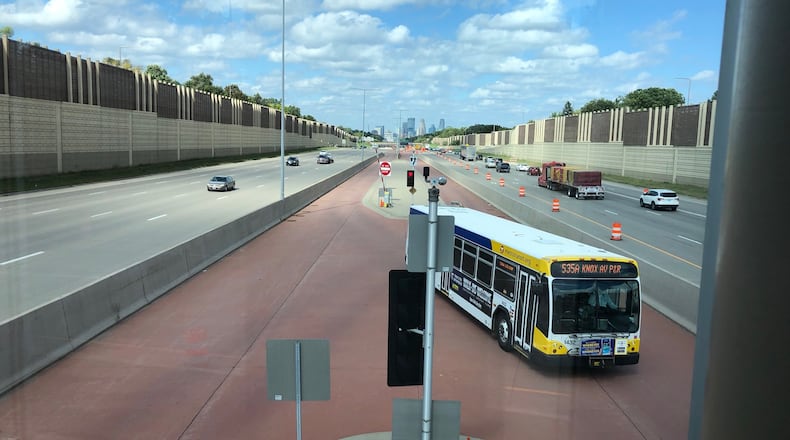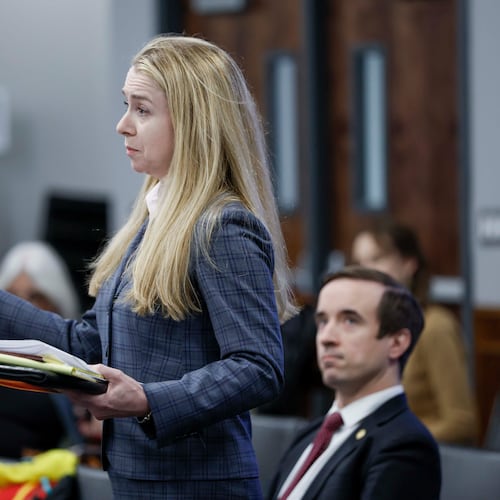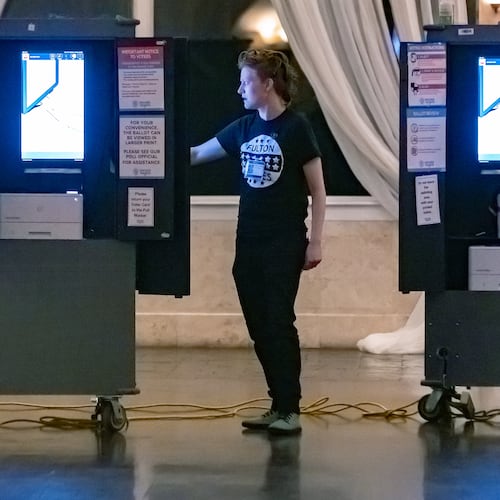The MARTA Board of Directors on Thursday sought federal approval for a bus rapid transit line that could usher in a new era of public transportation for metro Atlanta.
Such bus routes operate like trains, using exclusive lanes, limited stops and other features to speed passengers on their way. On Thursday the board sought federal permission for a revised Capitol Avenue/Summerhill line in Atlanta running between the southern arc of the Atlanta Beltline and MARTA’s Georgia State University station.
It would be the region's first bus rapid transit line — but likely not the last. Similar lines are planned for Clayton, DeKalb, Fulton and Gwinnett counties and elsewhere in Atlanta. Eventually, the region's bus rapid transit network could surpass the MARTA rail system.
If all goes well, the first line could be operating by fall 2024.
MARTA will be under tremendous pressure to make sure the first line doesn’t become just another bus stuck in traffic.
“This could be a model for the region,” said Joseph Hacker, a transportation planning expert at Georgia State University. “But if it’s done poorly, no one’s going to want to adopt it. It’s just another bus route.”
Though new to metro Atlanta, bus rapid transit can already be found in cities such as Denver, Los Angeles and Minneapolis-St. Paul. It differs from local bus service, which stops more frequently, and is designed to mimic passenger rail service.
Though the details vary from city to city, bus rapid transit passengers generally board at stations — not bus stops — and pay before boarding. The lines have limited stops and rely on exclusive lanes for at least part of their routes to ensure buses don’t get stuck in traffic.
That exclusive right of way is a key to successful bus rapid transit, said Kari Watkins, a civil engineering expert at Georgia Tech.
“That dedicated lane makes it so it can be faster than the cars that are stuck in congestion next to it,” Watkins said.
MARTA isn’t likely to have exclusive bus lanes for the full length of the Capitol Avenue/Summerhill line, nestled in a busy stretch of Atlanta. But it expects to use a mix of exclusive lanes and lanes shared with regular traffic. Buses could also use technology that gives them priority at traffic signals.
MARTA officials know they must keep buses moving for the line to be successful.
“There is zero appetite for having this be stuck in traffic,” said Heather Alhadeff, the agency’s assistant general manager for planning.
Construction of the $95.6 million transit line was made possible in 2016 when Atlanta voters approved a half-cent sales tax for a MARTA expansion. The agency also received a $12.6 million federal grant, which is why MARTA is seeking federal approval for the line.
Originally, the line was set to run from the old Turner Field to MARTA’s Arts Center station. But Alhadeff said public feedback led the agency to revise the route. On Thursday, the MARTA board voted to seek federal permission for the revised route.
The agency also plans two other bus rapid transit lines in Atlanta — generally along Northside Drive and North Avenue. It also plans a line along Ga. 400 in north Fulton County and in Clayton County from Southlake Mall to College Park station.
DeKalb and Gwinnett counties also have unveiled plans for similar lines. And mayors from Cobb, DeKalb and Fulton counties have discussed plans for bus rapid transit in express lanes along the top end of the Perimeter.
MARTA’s Capitol Avenue/Summerhill line will set the stage for all that follow. Transportation experts said the agency must keep the buses moving and provide frequent service for the line to be a success. They said MARTA must use branding to differentiate bus rapid transit from traditional local bus service.
Georgia Tech’s Watkins said it will be “hugely important” for MARTA to get the first bus rapid transit line right.
CEO Jeffry Parker put it a little differently.
“I think we’re excited about getting it right,” Parker said.
Bus rapid transit at a glance
Some features that distinguish bus rapid transit from regular local bus service:
- Exclusive lanes to speed buses past traffic congestion
- Limited stops
- Boarding at stations, instead of bus stops
- Payment before boarding
- Priority at traffic signals
About the Author
Keep Reading
The Latest
Featured





